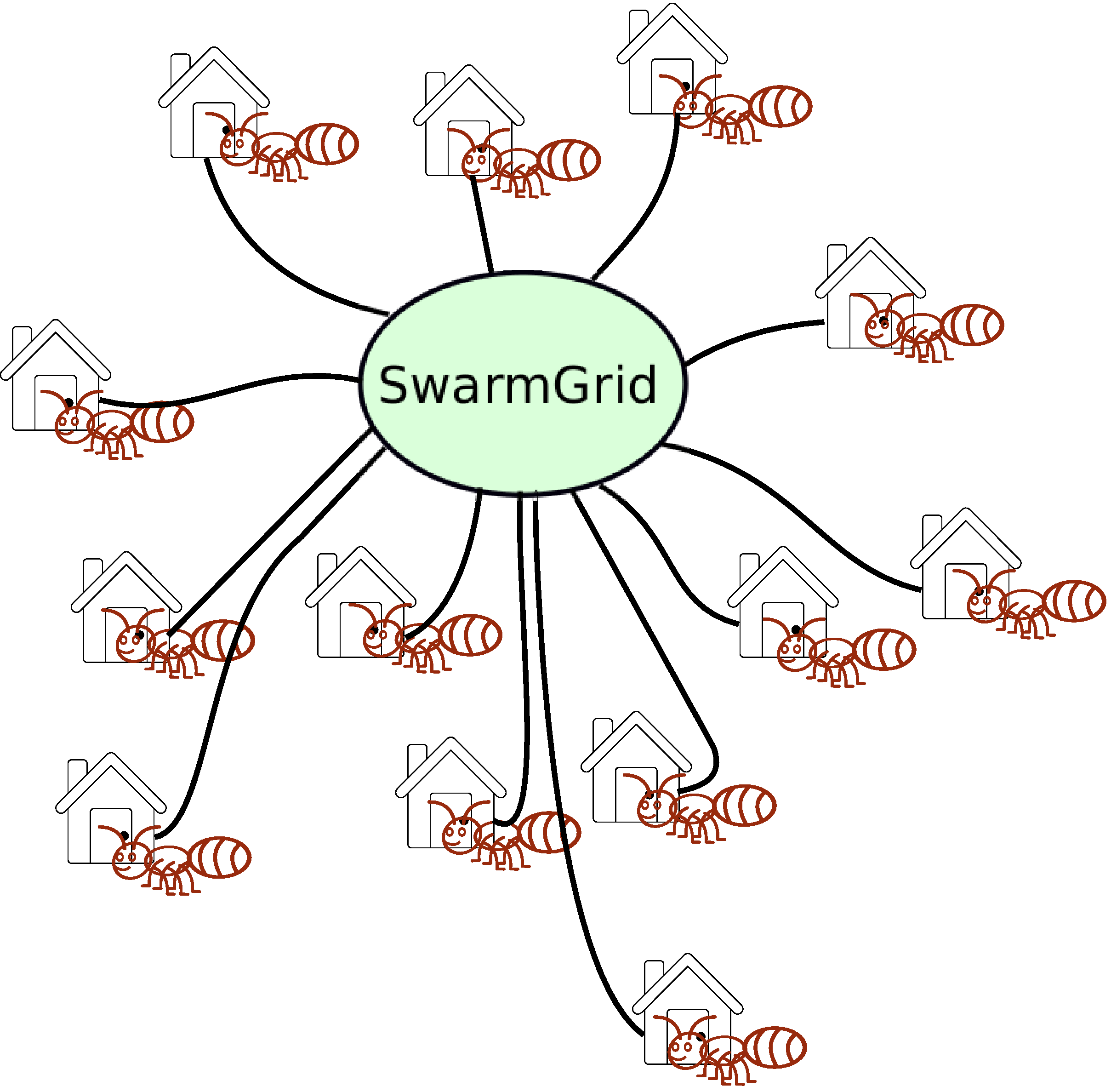Swarm Grid
The electricity grid has to respond to large power variations in relatively short periods of time. This behavior causes an inefficient operation and design of the electricity system. Demand Side-Management techniques are used to modify the power demand, reducing or smoothing its shape. Moreover, the electricity grid is a very huge system composed of millions of devices. There are problems associated with the density and distance between elements. The development of new technologies has increased the complexity of the grid in the last years. In this framework, the Smart Grid arises.
The inclusion of communication technologies into the grid allows a better monitoring and control of the system. Smart Grid systems must be able to manage thousands or even millions of devices to increase the efficiency of the electricity grid, but they have also to satisfy the classical grid constrictions. The amount of information and calculus of the Smart Grid management system should be reduced. For these reasons, our studies about the electricity grid synchronization are based on a distributed design. Specifically, they are focus on the Swarm Intelligence theory. The Swarm Intelligence theory is inspired on biological systems, concretely on the self-organized behavior of several species. The elements or agents follow very simple rules sensing the local environment and with a certain random degree. For these reasons, these algorithms are good candidates to solve the problem of the electricity grid synchronization, creating what we have called the "Swarm Grid".

- Manuel Castillo-Cagigal, Eduardo Matallanas and Álvaro Gutiérrez.
Swarm Grid: Collective synchronization of electricty grid devices.
Robolabo TechReport, [pdf]


